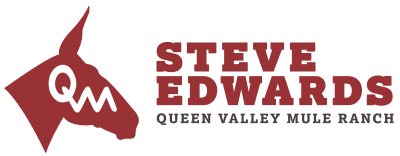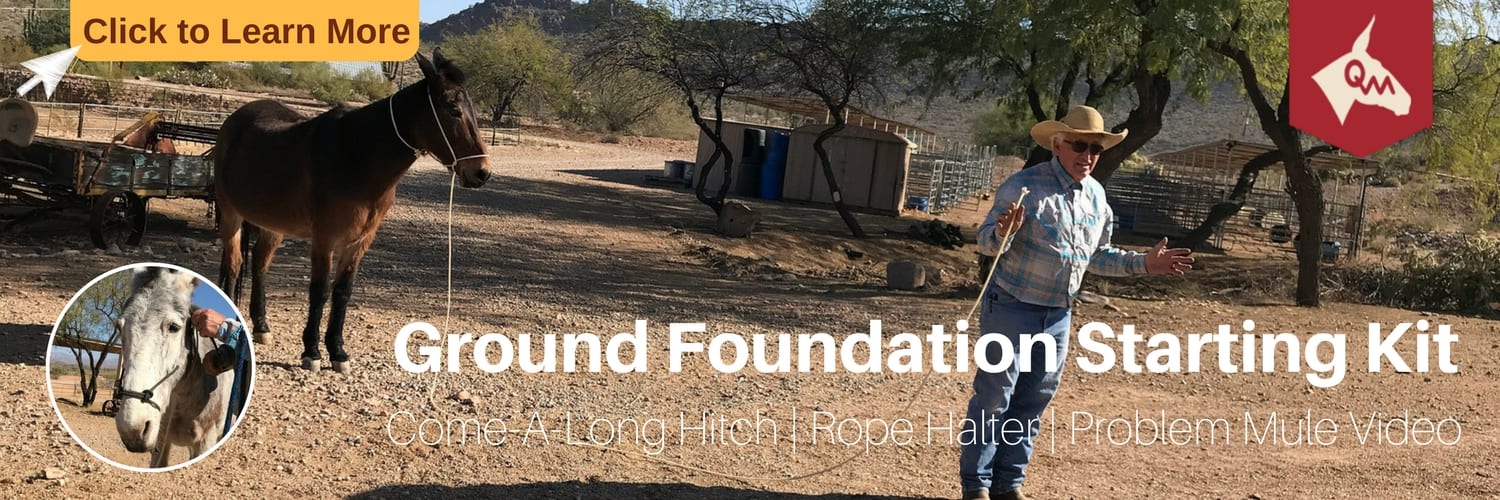Mule and Donkey Training – Maximum Communication
The Come-A-Long Rope is the most effective communication tool for halter work and foundation training because it communicates more effectively than rope halter and with greater influence.
So, what I’m asking is, “Will you follow me around on a leash, loose lead? Or were you gonna try to do your own thing? And if you do, that’s the wrong answer to my question. I’m gonna bump you.” OK? So, if you follow me around, on a loose, that’s right. That’s right. Good. Can I come over here? Come over here. This is all halter work. Slight bump. Keep following. That rope and if you pull it tight, it’s gonna make you uncomfortable.
Click here to learn more about the Come-A-Long Rope
One of the reasons I’m using the come along rope rather than rope halter is the come along rope communicates to the pole, top of the nose, bottom of the nose with more nerve pressure. I can get more done because what happens is this whole thing, between the pole, top and bottom, all creates kind of a vice situation. And it hits all the natural points that says, “Go right. Go left. Go straight. Pull back.” Where the halter only does just key points up on the nose, key points on the chin. Well, this does everything at one time and it tells him right now there’s not gonna be no other decisions. You better respond. OK?
So, it’s more of a full communication to everything, but the neat thing about it, when I do pull and I let go, it becomes loose right off the bat. Loose right off the bat. So, if I pull and let go, it becomes loose. This really, you got far more control. You got far more control with this then you’ve got with a rope halter or with a chain at all. Good.
Like when I was at Yosemite, we had a lot of mules with dead, underneath the nerves here from the chains so much. And so first thing I did, was I put the come along hitch on all of them so that I could get them to follow through because it communicates to the pole, top of the nose, bottom of the nose, full communication. And they have a choice. Look, when I first picked up on this, you see how it does the nose first. Then underneath the chin and then the pole. So, it kinda works in three stages. Ask, tell, demand, but if they really pull back, everything gets him at one time. So they can’t make a decision to go right, left or back. If they do, everything’s in trouble ’cause it gets to be more pressure.
The rope around the neck, round here, absolutely does nothing. It’s never gonna get tight. It’s just there. It’s just there to kind of hold everything into place, but this never will choke him, never gets tight. You know?
Ground Foundation Starting Kit
Everything you see in this video is part of proper Ground Foundation. Many folks have a mule that’s been “trained” – problem is that the new owner doesn’t know to what extent the mule was trained and if the training is something that can be depended on when the animal sees a bear or when you’re riding on the side of the mountain.
In my instructional DVD, Problem Mule, Building a New Foundation, you will discover the simple basics of teaching your mule to stop, back up, rein, balance, and discover maximum control. As you apply the principles found in the instructional video you will graduate from using the Come-A-Long Rope to using a properly adjusted rope halter. I’ve packaged all three items into the Ground Foundation Starting Kit.
- Posted in: Everything, Videos
- Tagged: Everything, Videos



